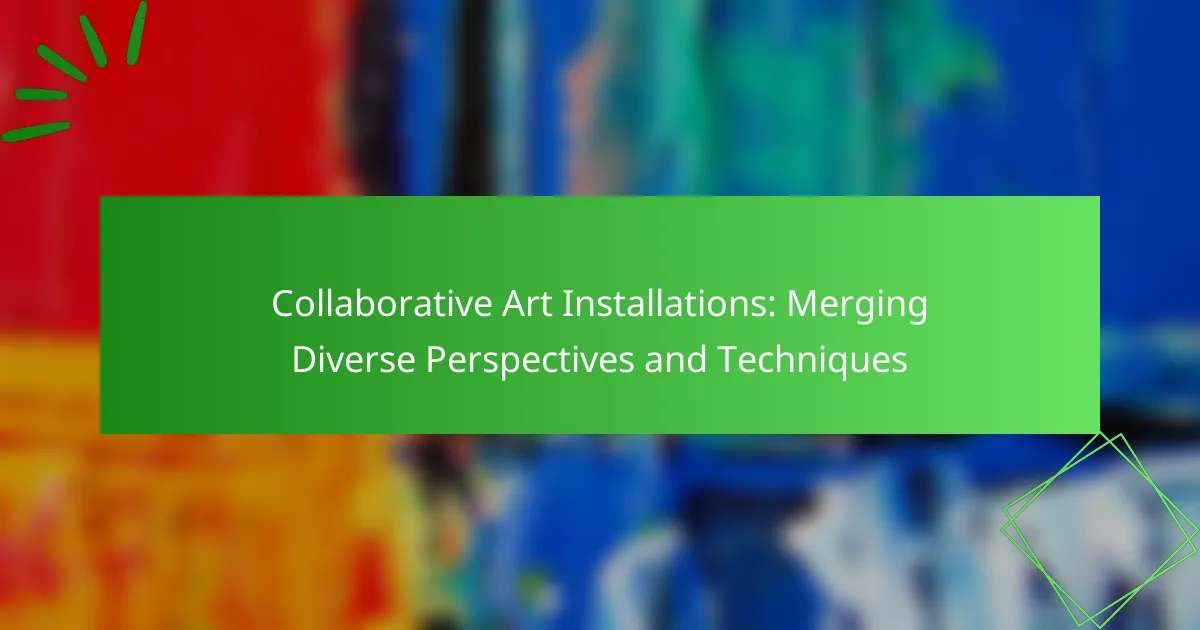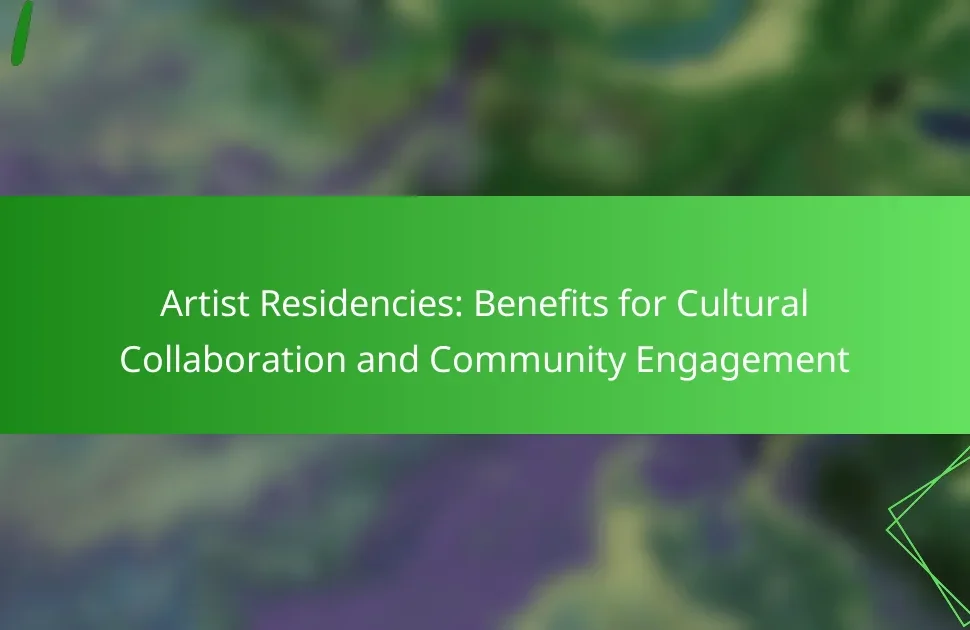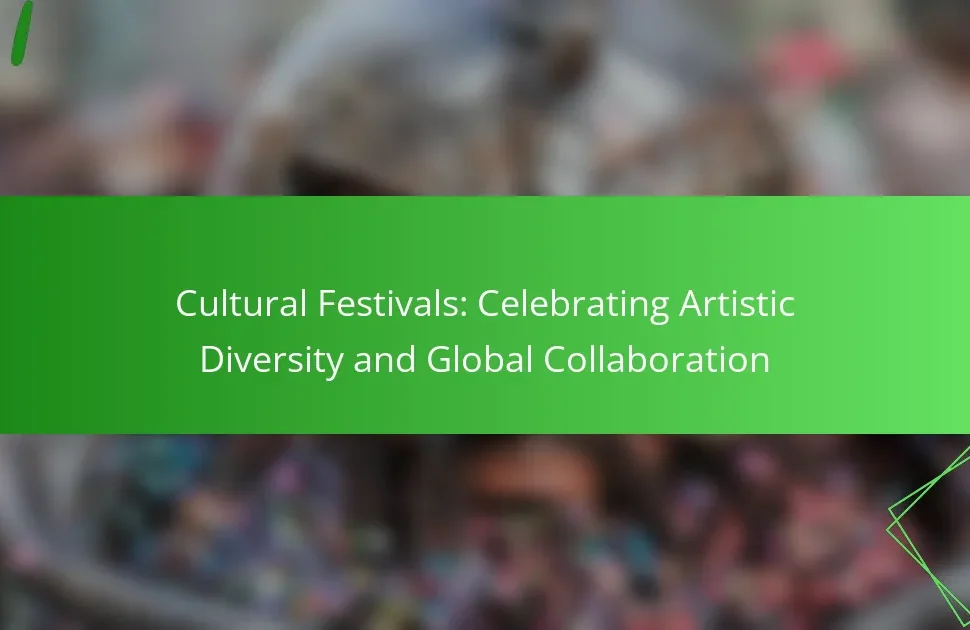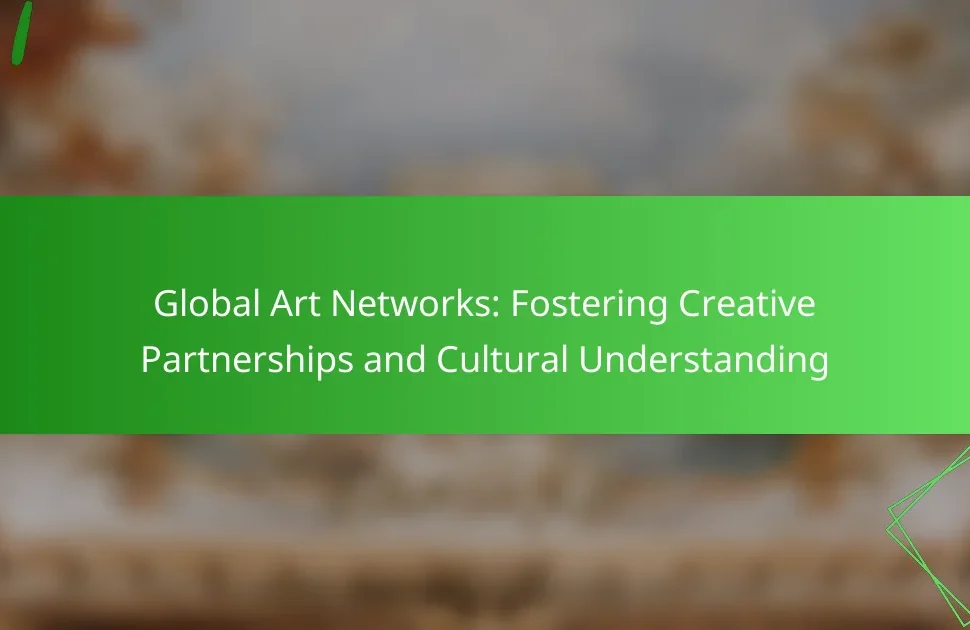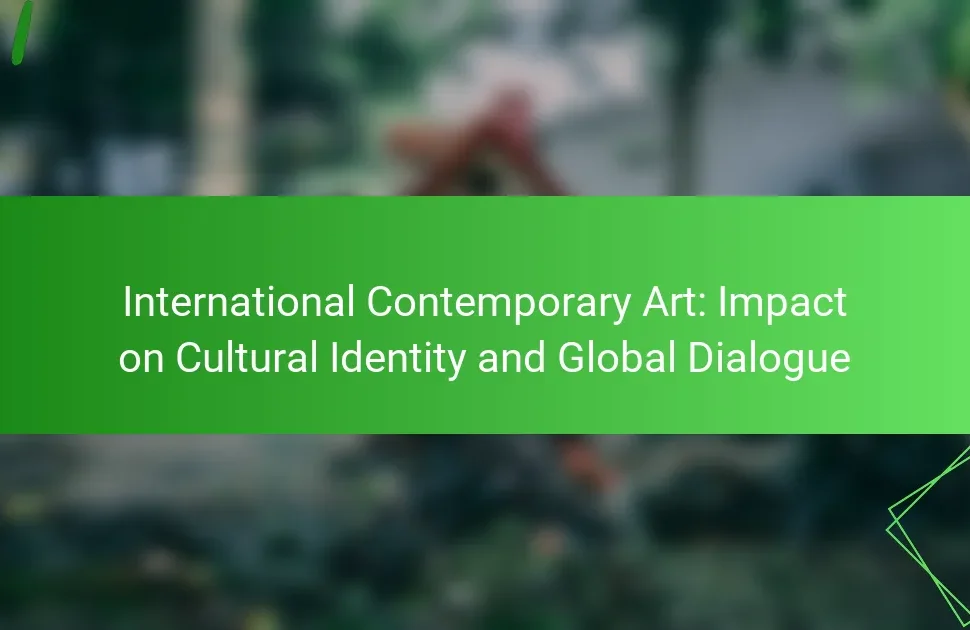Collaborative art installations enhance creativity and foster community engagement by merging diverse perspectives and techniques. This article explores the methods of community engagement and interdisciplinary collaboration, the challenges artists face, and notable examples that showcase the impact of these installations. Additionally, it discusses strategies for promoting collaborative projects effectively through social media and local involvement.
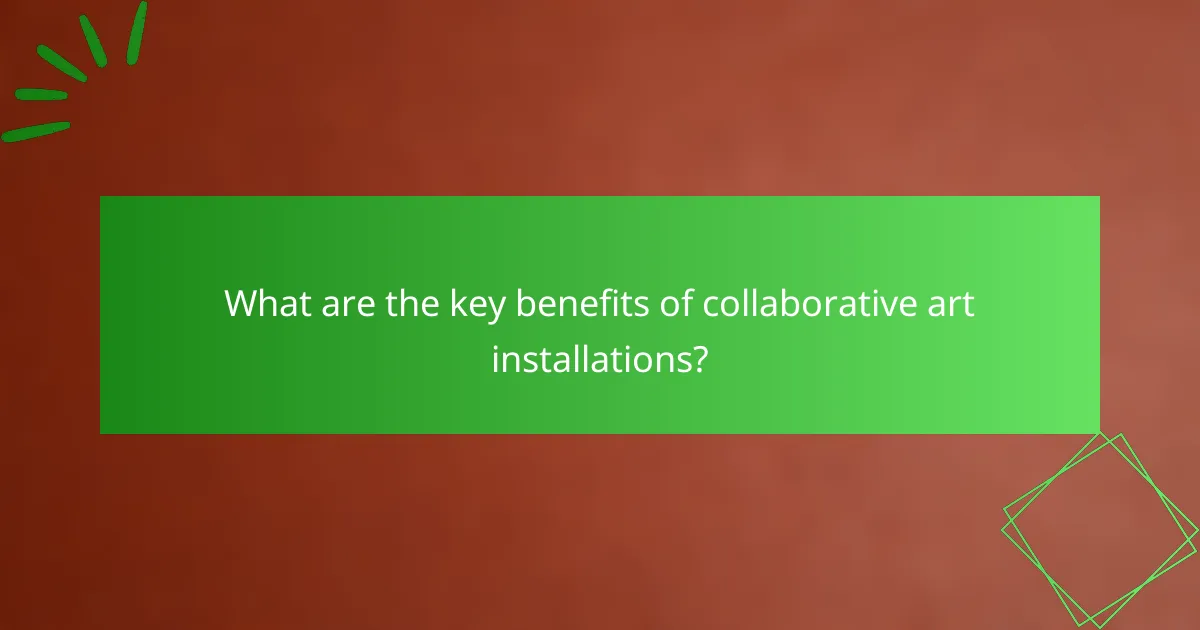
What are the key benefits of collaborative art installations?
Collaborative art installations enhance creativity, foster community engagement, and promote diverse perspectives. They allow artists to merge techniques, creating unique experiences that reflect collective voices. This collaboration can lead to innovative solutions and deeper cultural understanding. As a result, these installations often become platforms for dialogue and social change, engaging audiences in meaningful ways.
How do collaborative installations enhance community engagement?
Collaborative installations significantly enhance community engagement by fostering inclusivity and shared ownership. They bring together diverse perspectives, allowing participants to express their identities and experiences. This collective creativity strengthens social bonds and encourages dialogue among community members. As a result, these installations often reflect the unique attributes of the community, creating a sense of pride and belonging. They can also serve as platforms for addressing local issues, promoting awareness and action through art.
Why do diverse perspectives matter in art creation?
Diverse perspectives enhance art creation by fostering innovation and inclusivity. Collaborative art installations benefit from varied cultural backgrounds, experiences, and techniques, resulting in richer, more dynamic works. This diversity encourages artists to challenge norms and explore new ideas, leading to unique expressions. As a result, audiences engage more deeply with the art, appreciating the multifaceted narratives presented.
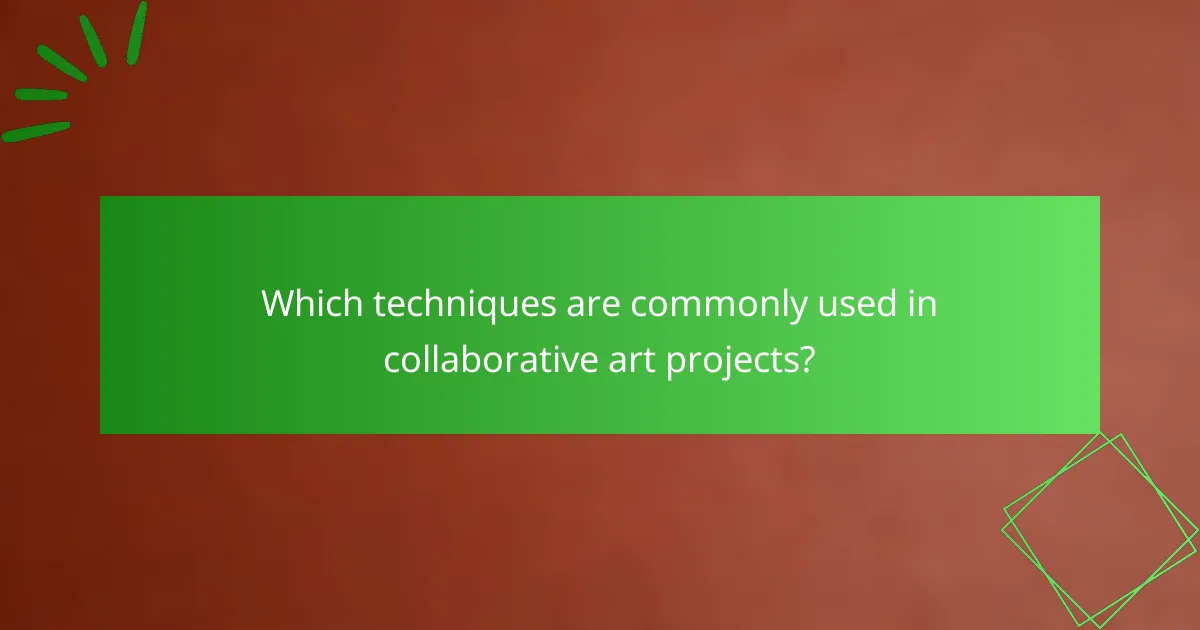
Which techniques are commonly used in collaborative art projects?
Collaborative art projects commonly use techniques such as community engagement, interdisciplinary collaboration, and collective decision-making. These methods foster diverse perspectives and enhance creativity.
Community engagement involves artists working with local populations to address social issues through art. Interdisciplinary collaboration brings together artists from various fields, merging techniques and ideas. Collective decision-making empowers participants to contribute equally, ensuring a shared vision.
These techniques not only enrich the artistic process but also create a sense of ownership among participants, enhancing the project’s impact and relevance.
How do artists choose their collaborative partners?
Artists choose collaborative partners based on shared vision, complementary skills, and mutual respect. They seek individuals whose artistic practices align with their own goals and values.
Network connections often play a significant role in these partnerships, as artists frequently collaborate with those within their established circles. Additionally, artists may consider the unique attributes that each collaborator brings, such as innovative techniques or distinct perspectives that can enhance the overall project.
Trust and communication are essential for successful collaborations, enabling artists to navigate creative differences and achieve a cohesive outcome. By fostering an environment of open dialogue, artists can merge their diverse backgrounds and techniques effectively.
What role does technology play in modern installations?
Technology enhances collaborative art installations by facilitating communication, enabling diverse techniques, and creating immersive experiences. It fosters interaction among artists and audiences, allowing for real-time feedback and adaptation. Digital tools like augmented reality and interactive displays expand the creative possibilities, merging traditional and contemporary methods. This integration of technology not only enriches the artistic process but also broadens the audience’s engagement, making art more accessible and dynamic.
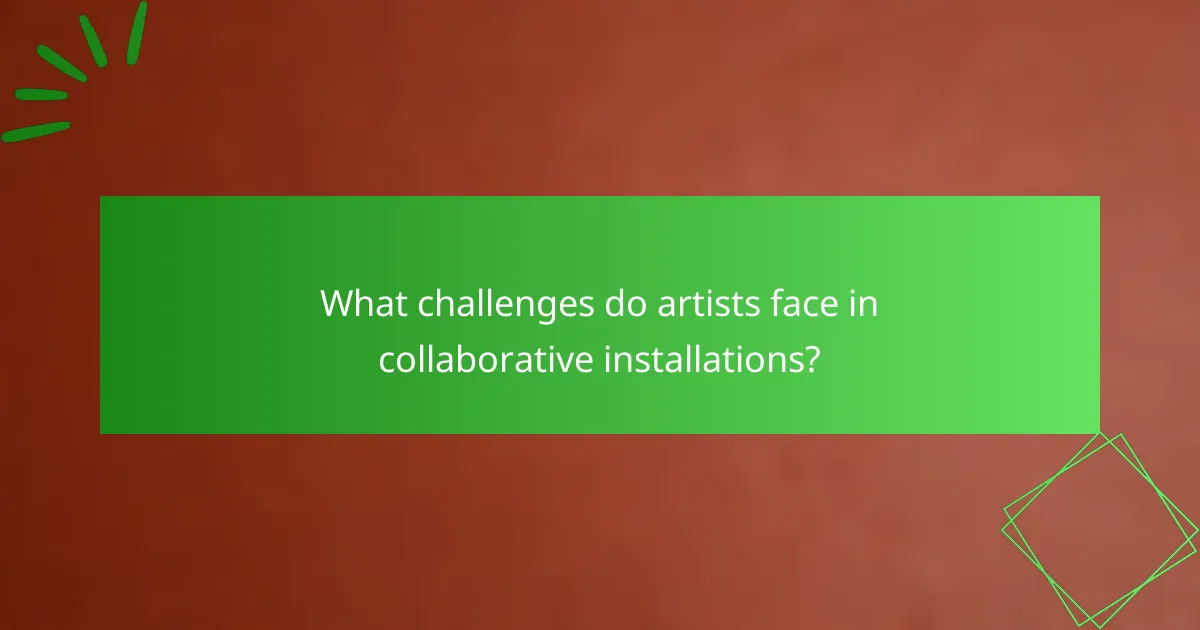
What challenges do artists face in collaborative installations?
Artists face challenges such as communication barriers, differing artistic visions, and logistical issues in collaborative installations. These obstacles can hinder the creative process and impact the final outcome. Effective collaboration requires clear dialogue to align diverse perspectives and techniques. Additionally, managing conflicts and ensuring equitable contributions are vital to achieving a cohesive installation.
How can conflicting artistic visions be reconciled?
Conflicting artistic visions can be reconciled through open dialogue and collaboration. Encouraging artists to share their perspectives fosters understanding and respect. Establishing common goals helps unify differing visions. Utilizing a facilitator can guide discussions, ensuring all voices are heard. Experimenting with mixed media allows for innovative solutions that blend various styles and ideas.
What logistical issues arise during collaboration?
Logistical issues during collaboration include communication barriers, scheduling conflicts, resource allocation, and differing artistic visions. These challenges can hinder the successful merging of diverse perspectives and techniques in collaborative art installations. Effective planning and open dialogue are essential to address these issues.
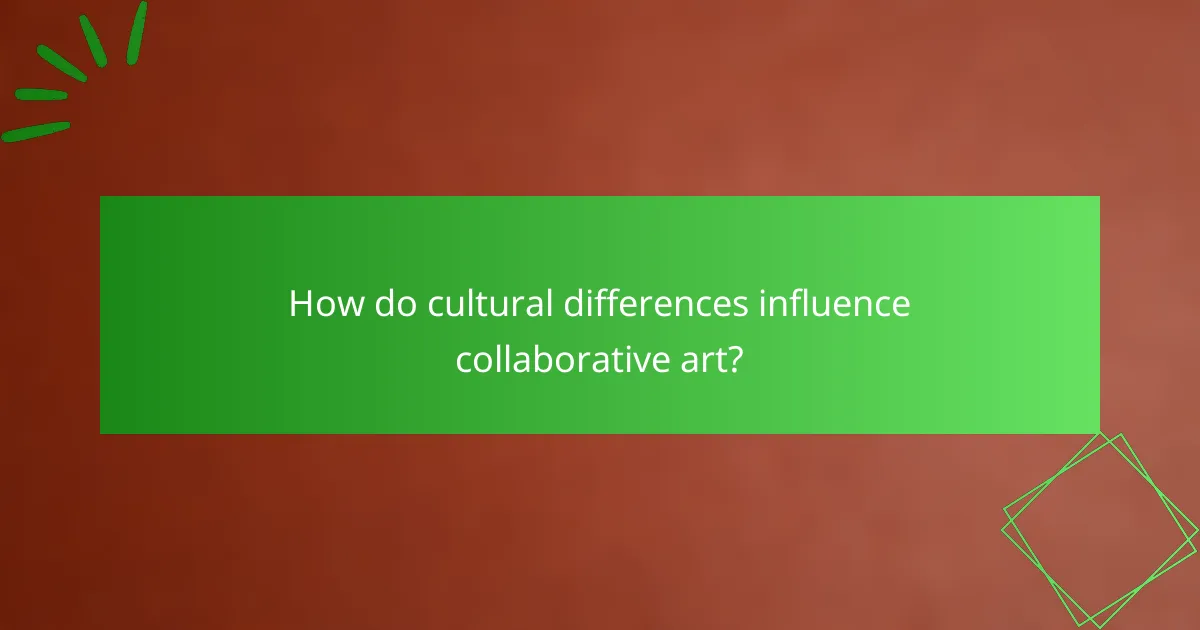
How do cultural differences influence collaborative art?
Cultural differences significantly enhance collaborative art by introducing varied perspectives and techniques. Diverse backgrounds foster creativity and innovation, resulting in unique installations that reflect a blend of cultural narratives.
For instance, collaborative art projects often incorporate traditional techniques from different cultures, enriching the final piece. This fusion can create dialogue among participants, leading to deeper understanding and appreciation of each other’s artistic expressions.
Moreover, cultural influences can shape the themes and messages conveyed in the artwork. Collaborators may address social issues pertinent to their communities, thus broadening the impact of the installation.
Finally, the process of collaboration itself can challenge stereotypes and promote inclusivity, making art a powerful medium for cultural exchange and unity.
In what ways do regional art styles shape collaborative projects?
Regional art styles significantly enhance collaborative projects by introducing diverse cultural perspectives and techniques. These influences foster creativity and innovation, enabling artists to merge unique attributes from their backgrounds. For example, a collaborative installation may blend traditional African motifs with contemporary Western styles, resulting in a rich, multifaceted artwork. This fusion not only broadens the artistic palette but also deepens audience engagement by reflecting a variety of cultural narratives. Ultimately, regional art styles shape collaborative projects by enriching the creative process and promoting inclusivity.
Which cultural events promote collaborative art initiatives?
Cultural events that promote collaborative art initiatives include festivals, workshops, and community projects. These gatherings encourage artists from diverse backgrounds to work together, sharing techniques and perspectives. For example, events like Art Basel and the Venice Biennale feature collaborative installations that merge various artistic expressions. Additionally, local community art fairs often foster partnerships among artists, enhancing cultural engagement and creativity.
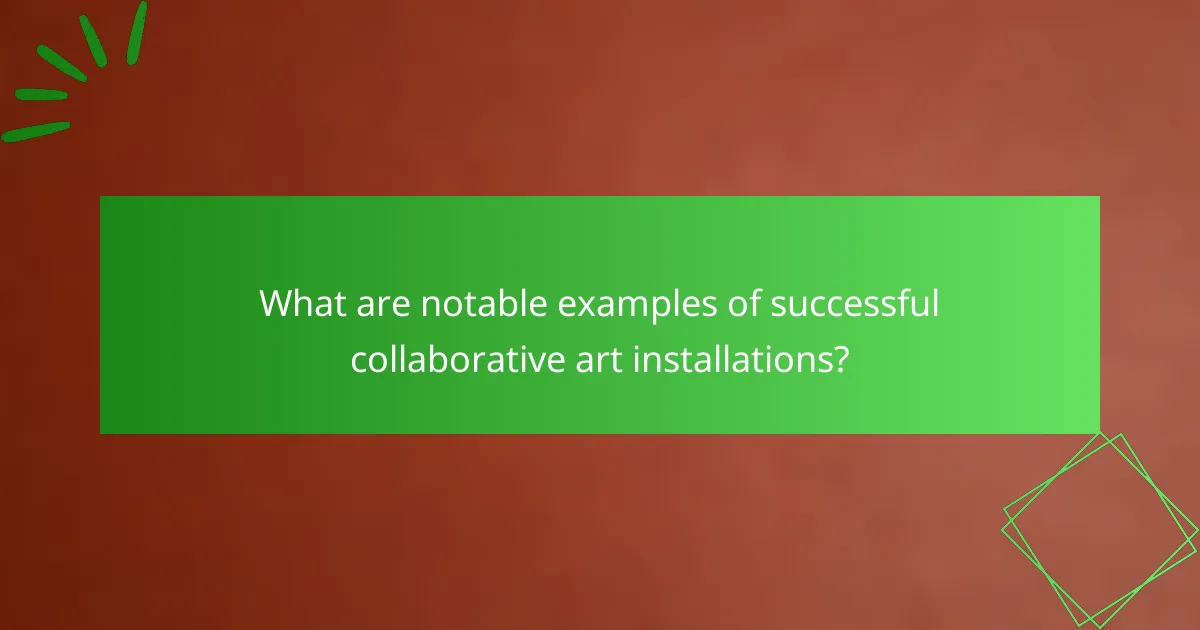
What are notable examples of successful collaborative art installations?
Notable examples of successful collaborative art installations include “The Obliteration Room” by Yayoi Kusama, which transforms a white room into a colorful space through audience participation. Another example is “The Dinner Party” by Judy Chicago, celebrating women’s history with a collaborative effort in design and craftsmanship. “Inside Out” by JR invites communities to share their stories through large-scale portraits, fostering connection and dialogue. “The Floating Piers” by Christo and Jeanne-Claude allowed visitors to walk on water, merging art with nature and public interaction. These installations exemplify the power of collaboration in creating immersive experiences.
How did specific installations reflect community identity?
Collaborative art installations reflect community identity by integrating diverse perspectives and techniques. These projects foster a sense of belonging, allowing participants to express cultural narratives and shared experiences.
For example, community murals often incorporate local history and symbols, making the artwork a representation of collective memory. This collaborative process not only enhances social cohesion but also empowers individuals to contribute to their environment.
Additionally, interactive installations invite public engagement, creating a dialogue around pressing social issues. This participatory aspect ensures that the art remains relevant to the community’s evolving identity.
Ultimately, these installations serve as a canvas for unity, showcasing the unique attributes of the community while celebrating its diversity.
What unique attributes set these projects apart?
Collaborative art installations stand out due to their emphasis on inclusivity and diverse perspectives. Unique attributes include the integration of various artistic techniques, fostering community engagement, and promoting cross-cultural dialogue. These projects often feature interactive elements that invite audience participation, enhancing the overall experience. Additionally, they may incorporate technology, such as augmented reality, to create immersive environments that challenge traditional art forms.
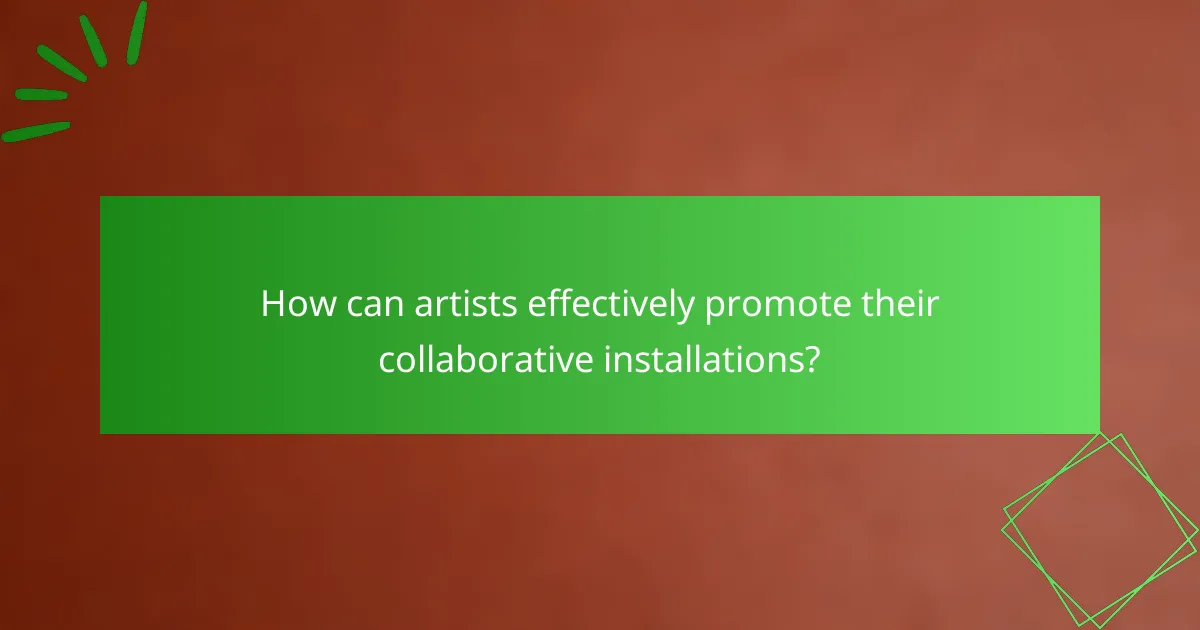
How can artists effectively promote their collaborative installations?
Artists can effectively promote their collaborative installations by leveraging social media, engaging local communities, and hosting interactive events.
Utilizing social media platforms allows artists to showcase their work, share behind-the-scenes content, and connect with a wider audience. Engaging local communities through workshops or discussions fosters a sense of ownership and interest in the installation. Hosting interactive events invites participation, creating a memorable experience that encourages word-of-mouth promotion.
By combining these strategies, artists can enhance visibility and attract diverse audiences, enriching the collaborative art experience.
What marketing strategies resonate with diverse audiences?
Collaborative art installations effectively resonate with diverse audiences by integrating multiple cultural perspectives. These installations foster inclusivity and encourage dialogue among participants.
They often utilize shared themes and techniques, allowing artists from different backgrounds to contribute unique viewpoints. As a result, attendees experience a rich tapestry of ideas, enhancing engagement and emotional connection.
Additionally, these projects can include community involvement, where local voices shape the narrative, further amplifying the impact. Collaborations that highlight social issues or celebrate cultural heritage can create a deeper resonance with varied demographics.
In summary, diverse artistic collaborations create inclusive environments that invite participation and foster understanding, making them powerful marketing strategies for reaching broad audiences.
Which platforms are best for showcasing collaborative work?
The best platforms for showcasing collaborative art installations include social media, online galleries, and community art spaces. These venues facilitate interaction and engagement among diverse audiences.
Social media platforms like Instagram and Facebook allow artists to reach a global audience and share their collaborative processes. Online galleries such as Artsy and Saatchi Art provide a curated space for showcasing works, enabling artists to connect with collectors. Community art spaces foster local engagement and often host collaborative exhibitions, enhancing visibility for artists involved.
Each platform offers unique attributes that cater to different aspects of collaborative art, promoting diverse perspectives and techniques effectively.
What are best practices for maximizing audience interaction?
To maximize audience interaction in collaborative art installations, focus on inclusivity, engagement, and feedback. Encourage diverse participation by inviting artists from various backgrounds, which enriches perspectives. Utilize interactive elements like workshops or live demonstrations to foster connection. Collect audience feedback to refine future projects and ensure ongoing engagement.
What common mistakes should artists avoid in collaborative projects?
Artists should avoid lack of communication, unclear roles, and ignoring diverse perspectives in collaborative projects. Effective collaboration requires open dialogue and defined responsibilities. Additionally, artists must embrace flexibility to accommodate different techniques and ideas. Establishing clear goals and timelines can prevent misunderstandings and ensure a cohesive vision.
